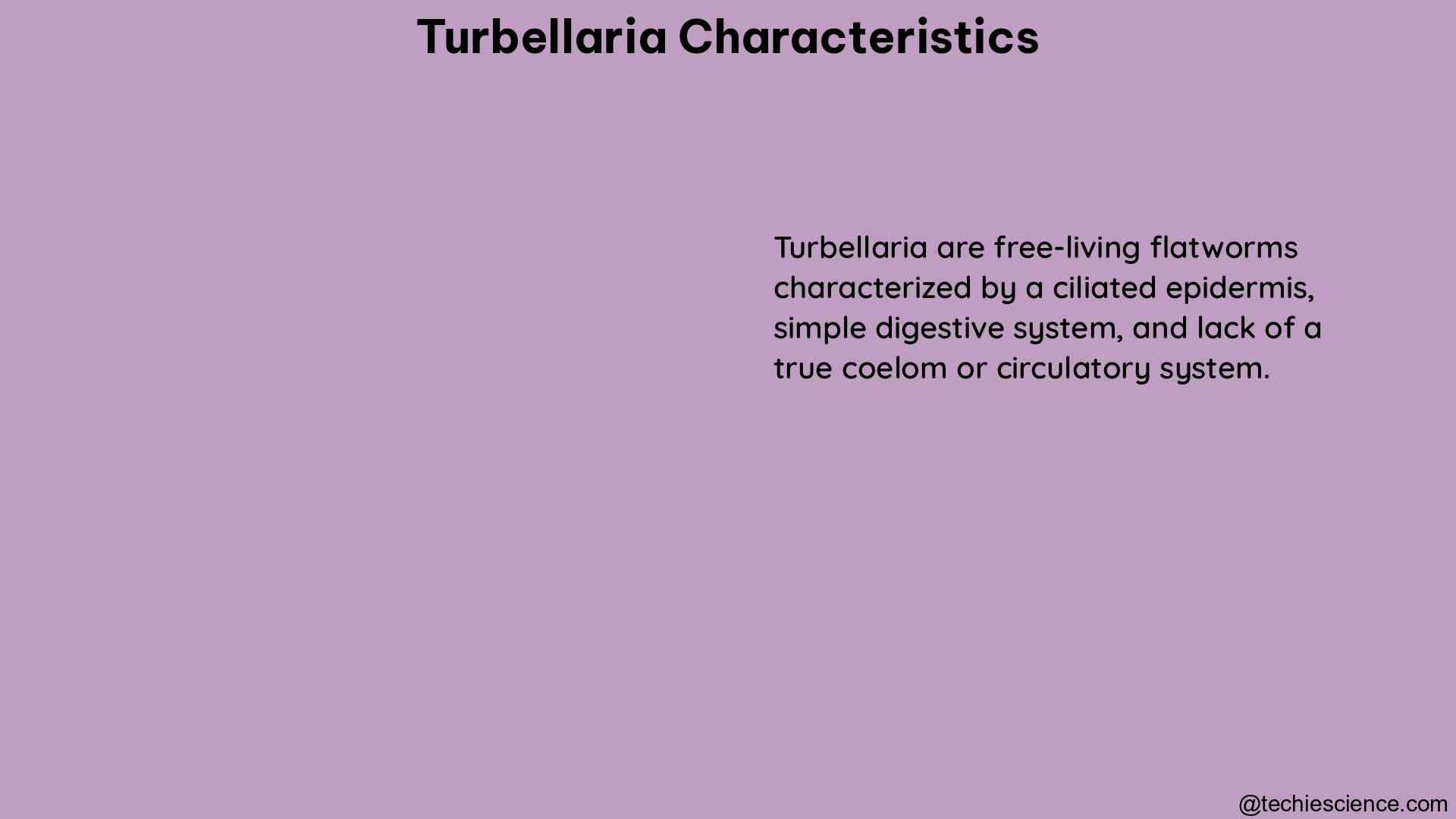Turbellaria, a class of invertebrates belonging to the phylum Platyhelminthes, are known for their unique and diverse characteristics. This comprehensive guide delves into the intricate details of Turbellaria, providing a wealth of measurable and quantifiable data points to help you understand these fascinating creatures.
Body Size and Morphology
Turbellarians exhibit a wide range of body sizes, ranging from a few millimeters to an impressive half meter in length. This remarkable variation in size is a testament to the adaptability and evolutionary success of this group.
The body shape of Turbellaria is typically flattened and elongated, with a distinct cephalic region and a ventral mouth opening. The epidermis is ciliated, allowing for efficient locomotion and facilitating the movement of water currents over the body surface, which is crucial for respiration and feeding.
Prevalence and Density of Flatworm Infestation

The prevalence and density of Turbellaria infestation in their host species can vary significantly. Studies have revealed the following data:
| Host Species | Prevalence of Infestation | Mean Density of Infestation (worms per snail) |
|---|---|---|
| T. pellisserpentis | 89% | 5.7 ± 0.6 |
| N. scabricosta | 50% | 2.6 ± 0.7 |
| N. funiculata | 28% | 0.8 ± 0.2 |
| P. planicostatus | 3% | 0.03 ± 0.02 |
| C. stercusmuscarum | 0.01% | 0.01 ± 0.01 |
These figures highlight the diverse host-parasite relationships within the Turbellaria, with some species exhibiting high prevalence and density, while others are more rarely encountered.
Morphometric Measurements
Turbellaria inhabit a wide range of host species, and the morphometric measurements of these hosts can vary significantly. Parameters such as shell length, blotted wet mass (BWM), and approximated cavity volumes have been found to differ among the various snail species that serve as hosts for Turbellaria.
Field Density
The field density of Turbellaria, measured as the number of individual worms per square meter, can also vary considerably depending on the specific host species and habitat. This metric provides valuable insights into the abundance and distribution of these flatworms in their natural environments.
Embryonic Development and Cleavage Pattern
Turbellarians undergo a unique form of embryonic development known as spiral cleavage. This distinctive pattern of cell division results in a highly organized and predictable arrangement of blastomeres, which is a hallmark of many invertebrate taxa.
Regeneration Capacity
One of the most remarkable characteristics of Turbellaria is their exceptional capacity for regeneration. Particularly in the genus Dugesia, these flatworms have the ability to regenerate somatic parts, including the head, eyes, and even the entire body from small fragments, making them a fascinating subject of study in the field of developmental biology.
Excretory System
Turbellarians utilize a specialized excretory system known as protonephridia, which are scattered throughout their epidermis. These structures play a crucial role in the removal of metabolic waste and the maintenance of homeostasis within the organism.
Nervous System
The complexity of the turbellarian peripheral nervous system varies among different species. Some exhibit a relatively simple nerve net based on pairs of longitudinal nerve cords, while others possess an intricate web of nerves capable of fine muscular control, reflecting the diverse adaptations and ecological niches occupied by these flatworms.
Reproduction and Life Cycle
Turbellarians are simultaneous hermaphrodites, meaning they possess both male and female reproductive organs. They reproduce by laying eggs bundled into cocoons, and the young undergo direct development, hatching as juveniles.
Pharynx and Gut Morphology
The classification of different orders within the Turbellaria is largely based on the type of pharynx, the organization of the reproductive system, and the branching pattern of the gut. These morphological features serve as important taxonomic characters in the identification and understanding of the evolutionary relationships within this diverse group of flatworms.
By delving into the intricate details of Turbellaria characteristics, this comprehensive guide provides a valuable resource for students, researchers, and enthusiasts interested in the fascinating world of these invertebrates. The wealth of data points, facts, and figures presented here offer a deeper understanding of the remarkable adaptations and diversity within the Turbellaria.
References:
- Susan A. Bergeron, Edited by Betty Miller, Spring 1995, Turbellaria, Invertebrate Zoology, http://jupiter.plymouth.edu/~lts/invertebrates/Primer/text/turbellaria.html
- Variable host responses mediate host preference in marine flatworm, https://www.ncbi.nlm.nih.gov/pmc/articles/PMC7924752/
- Turbellaria: INFORMATION – Animal Diversity Web, https://animaldiversity.org/accounts/Turbellaria/
- Turbellaria: Topics by WorldWideScience.org, https://worldwidescience.org/topicpages/t/Turbellaria.html

Hi….I am Anushree Verma, I have completed my Master’s in Biotechnology. I am a very confident, dedicated and enthusiastic author from the biotechnology field. I have a good understanding of life sciences and great command over communication skills. I thrive to learn new things every day. I would like to thank this esteemed organization for giving me such a great opportunity.
Let’s connect through LinkedIn- https://www.linkedin.com/in/anushree-verma-066ba7153